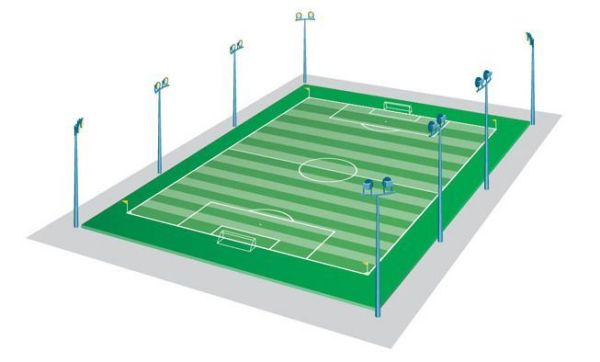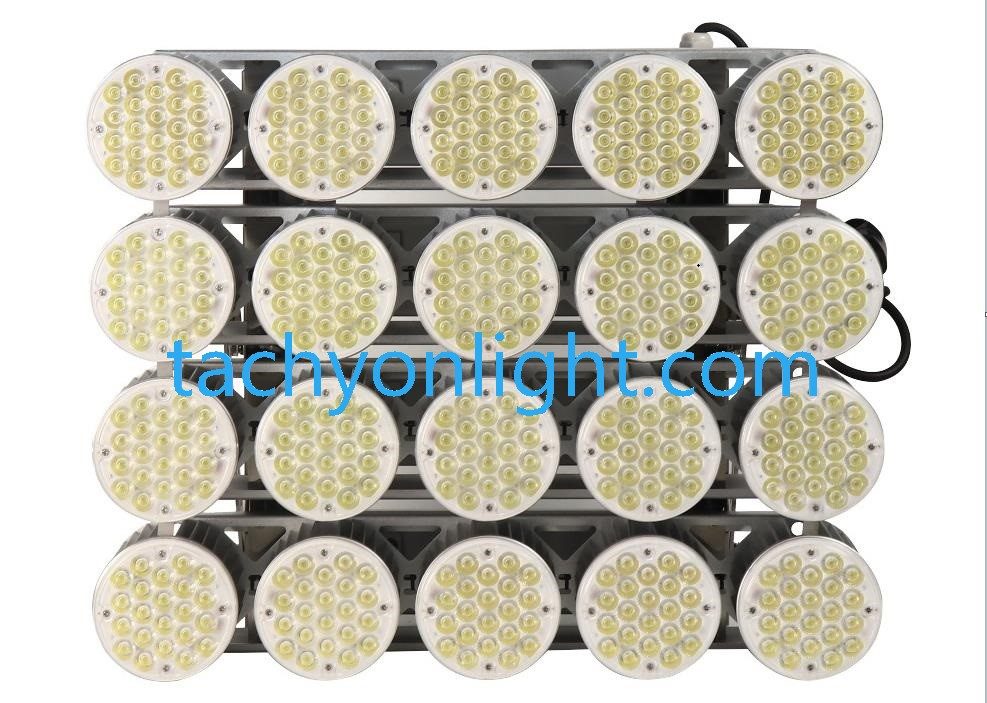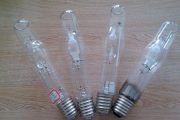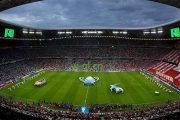the Footage of a Standard Football Pitch
Regular football field size:
Site: 105 meters long and 68 meters wide i,
Goal: 7.32 meters long and 2.44 meters high,
Large penalty area (penalty area): 40.32 meters long, 16.5 meters wide, 16.5 meters from the goal post from the baseline,
Small restricted area (goal area): 18.32 meters long, 5.5 meters wide, 5.5 meters from the goal post on the baseline,
Middle circle area: 9.15 meters in radius,
Corner kick area: radius of 1 meter, 13.84 meters from the penalty area,
Penalty arc: a semicircle with a radius of 9.15 meters centered on the penalty kick,
Penalty point: 11 meters from the goal line
- The competition venue should be rectangular, with a length of no more than 120 meters or less than 90 meters, and a width of no more than 90 meters or less than 45 meters (the length of the venue for international competitions should not be more than 110 meters or less than 100 meters, and the width Not more than 75 meters or less than 64 meters).
At present, in accordance with the standard specifications commonly used by the International Football Association (FIFA), the international standard football field is 105 meters long and 68 meters wide, with a buffer lawn of at least 2-4 meters around it.
- Forbidden area arc (penalty arc): With the penalty point as the center and 9.15 meters as the radius, draw an arc outside the penalty area, called the penalty arc.
The distance between the restricted area line and the bottom line: 16.50 meters.
The distance between the small restricted area line and the bottom line: 5.50 meters.
The two restricted areas are 11 meters apart.
- The radius of the arc of the middle circle is 9.15 meters; according to the standard specifications commonly used by FIFA, the top of the arc of the middle circle is 43.35 meters away from the bottom line of the same half.
- The circumference of the football shall not be more than 71 cm or less than 68 cm. The radius of the football should be between 10.3-11.8 cm. The two goal posts are 7.32 meters apart and 2.44 meters high.
- When taking a corner kick, the opposing player needs to leave the corner flag area for 9.15 meters (10 yards).
the Lux Requirement of a Football Stadium
-
Light source selection
1.1 High-power LED lights should be used in gymnasiums with a building height greater than 4 meters. Whether it is
outdoors or indoors, LED lights are the most important light source that should be prioritized for sports lighting color TV broadcasting.
1.2 The selection of light source power is related to the number of lamps and light sources used, and at the same time affects the illumination uniformity, glare index and other parameters in the lighting quality. Therefore, selecting the power of the light source according to the site conditions can make the lighting solution more cost-effective. The power of the LED light source is classified as follows: 1000W or more (not including 1000W) is high power; 1000~400W is medium power; 250W or less is low power. The power of the light source should be suitable for the size, installation location and height of the competition venue.
Outdoor stadiums should use high-power and medium-power LED flood lights, and indoor stadiums should use medium-power LED flood lights.
1.3 The luminous efficiency of LED flood light of various powers is 100~200Lm/W, the color rendering index is 80~95Ra, and the color temperature is 2700~6500K depending on its type and composition. For outdoor sports facilities, 4500K or higher is generally required, especially at dusk to match the sunlight. For indoor sports facilities, 4000K or higher is usually required.
1.4 The lamps should have anti-glare measures.
1.5 Used in stadiums that should have a long service life. LED flood light has a long service life and slow light decay; high-power metal halide lamps usually have a short service life and fast light decay. They are not suitable for long and frequent use.
1.6 Open-type lamps should not be used. The protection level of the lamp housing should not be less than IP55, and the protection level should not be less than IP65 in places that are inconvenient for maintenance or heavily polluted.
-
Light pole requirements
2.1 For the four-tower or belt-type lighting method of the stadium, the high-lighting pole should be selected as the bearing body of the lamps, and the structure combined with the building can be adopted.
2.2 The high lighting pole should meet the following regulations:
When the height of the light pole is greater than 20 meters, an electric lifting basket should be used,
When the height of the light pole is less than 20 meters, a ladder should be used. The ladder has a guard fence and a rest platform.
2.3 The high lighting pole should be set with obstacle lighting according to navigation requirements.
-
Outdoor stadium
a Outdoor stadium lighting should adopt the following layout:
Arrangement on both sides-lamps and lanterns are combined with light poles or building horse tracks, arranged on both sides of the competition field in the form of continuous light strips or clusters.
Four-corner arrangement-lamps are combined with light poles in a concentrated form and arranged at the four corners of the competition venue.
Mixed layout-a combination of two-sided layout and four-corner layout.
-
Football field illumination requirements
4.1 The average horizontal illumination (Eh) and uniformity of horizontal illumination (Uh) of the football field
The horizontal illuminance is the value measured when the illuminance tester is placed horizontally above the football field. Usually, the “center point method” is used to measure the illuminance value of each point, and then the relevant data such as the maximum, minimum and average illuminance are calculated. If it is a normal football club, the average illuminance (Eh) of the football field lighting level is 150lux, and the ratio of the minimum illuminance to the average illuminance (U2) is not less than 0.5.
For a top-level football match like the World Cup in Qatar, the vertical illuminance (Evmai) in the direction of the main camera must reach 2000 lux, the vertical illuminance in the direction of the auxiliary camera (Evaux) must reach 1400 lux, and the ratio of the minimum illuminance to the maximum illuminance (U1) is not Less than 0.7, the ratio of the minimum horizontal illuminance to the average illuminance (U2) is not less than 0.8
4.2 Vertical Illumination of Football Field Lighting
The vertical illuminance helps to capture close-ups of the moments in motion during the game, especially facial expressions. These camera lenses must cover the entire field during the game, too large changes in vertical illumination will result in poor digital video quality. The designer must consider the illuminance balance in all directions to reduce the unevenness of the illuminance when the site camera shoots.
Lighting Options for Football Stadium
With the rapid development of the use of LED lighting, the use of LEDs in football field lighting has also attracted the attention of many people. So far, there have been a lot of newly built and renovated football stadiums at home and abroad that have selected Tachyon LED football stadium lights, especially professional competition stadiums.
LED lighting fixtures have the unique advantages of long life, energy saving, environmental protection, and no glare, so they are very suitable for football stadium lights. Because the football field needs to be broadcasted in high-definition television at the same time as the game, the lighting standards required are higher, and there are higher standards for the stability, glare, strobe and other related issues of the lighting fixtures.
LEDs used as football field lighting must meet the corresponding standards in product performance and technical applications. In the field of football field lighting, Tachyon lighting is widely used. Tachyon’s lamps have excellent performance in terms of energy saving, service life, installation and maintenance, or smart applications and light quality. Regarding the choice of sports lighting brand, many football venues in the industry have chosen to cooperate with Tachyon.
How Much Electricity does a Football Stadium Use?
According to the requirements of the lighting standards for international football matches, a standard football field is 105m x 68m in size, and the required illuminance is 700 lx. According to this standard, the design is calculated by using Tachyon 1000W ARE-1000-L floodlights, The number of lamps required in the field is 38 pcs.
Since the average electricity cost in the EU is approx. $0.16 KW/h; therefore, the running cost on stadium lighting is about 38000 * 0.16 / 1000 = $6.08 / hour. If they operate for 8 hours per day, and 15 days per month , the daily cost will be $48.64, and the monthly $730.00. Therefore, it is wise to have the metal halide replacement with LED stadium lights because we can immediately save $800 energy expenses per month.





